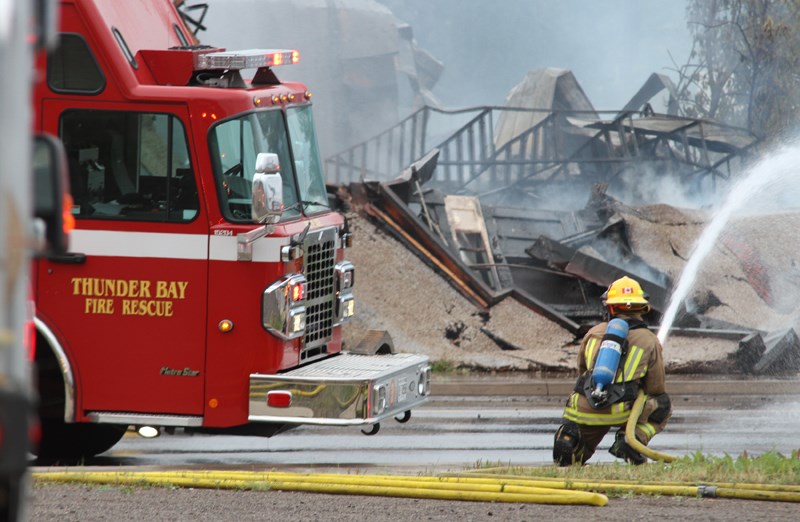THUNDER BAY – Thunder Bay’s fire department expects changes to how it deploys staff will bring over one million dollars in yearly savings, eventually eliminating nine staff positions by attrition.
Newly appointed fire chief Greg Hankkio called the changes a win-win while presenting a proposed implementation plan for the department’s new strategic master fire plan to city council Monday.
“What we’re presenting to you tonight is some long-term savings without a reduction in the level of service,” he said.
The plan won councillors’ unanimous approval, drawing praise for finding savings without compromising the department's key mandate.
“Typically people get angry with us because we spend money,” said Coun. Andrew Foulds. “Tonight, we’re looking at a report that [will maintain] the health and safety of our workers [and] the service to our citizens, and we’re looking at a $1.1 million reduction in costs.”
The savings would come by eliminating a dedicated “entry control and accountability” position, which tracks the location and tasks of firefighters, monitors time spent on breathing apparatuses, and crew on scene.
Instead, TBFR will assign the role to a responding firefighter on each shift. The resulting efficiencies will allow the department to eliminate nine positions through attrition by 2024.
The changes will in fact put more firefighters on the ground responding to emergencies like structure fires, Hankkio has told Tbnewswatch.
Thunder Bay pays more per capita for its fire services than the provincial average, Hankkio acknowledged Monday, and has more firefighters per capita.
“We do recognize that the number of firefighters we have compared to other municipalities is higher in some respects,” he said. “Quite frankly, this report is an effort to find efficiencies and reduce that per capita cost.”
General manager of emergency services Mark Smith said the department’s relatively higher costs reflected more on the city it serves than its own performance, however.
“This is a good example of one of the many costs of urban sprawl,” he said. “Thunder Bay is a very low density city, and that’s one of the reasons the cost [per capita] is higher than many. I think what should be noted, however, is on a cost per unit of service, we actually compare very favourably.”
Larger questions about the number and location of fire stations raised in the fire master plan likely won’t be settled until at least 2022, according to the implementation plan.
The implementation plan puts off a decision on that question until 2022, with administration set to report back with a comprehensive recommendation on fire station location in the second quarter of that year.
Options set out in the master plan range from a “status quo” plan to replace the Vickers fire hall with a new, smaller building to a “realignment option” consolidating the Vickers and Water Street stations into one. Another option proposes converting the Churchill Drive station to an EMS station.
The city’s firefighters association has raised the alarm over some of those possibilities, arguing reductions could cause longer response times and put firefighters in danger.
Hankkio has said he'd like to see a full risk assessment completed before any decisions are made on station realignment, and hopes council will choose to keep the status quo, with the alternative recommendation to eliminate nine positions through attrition making up enough cost savings.
